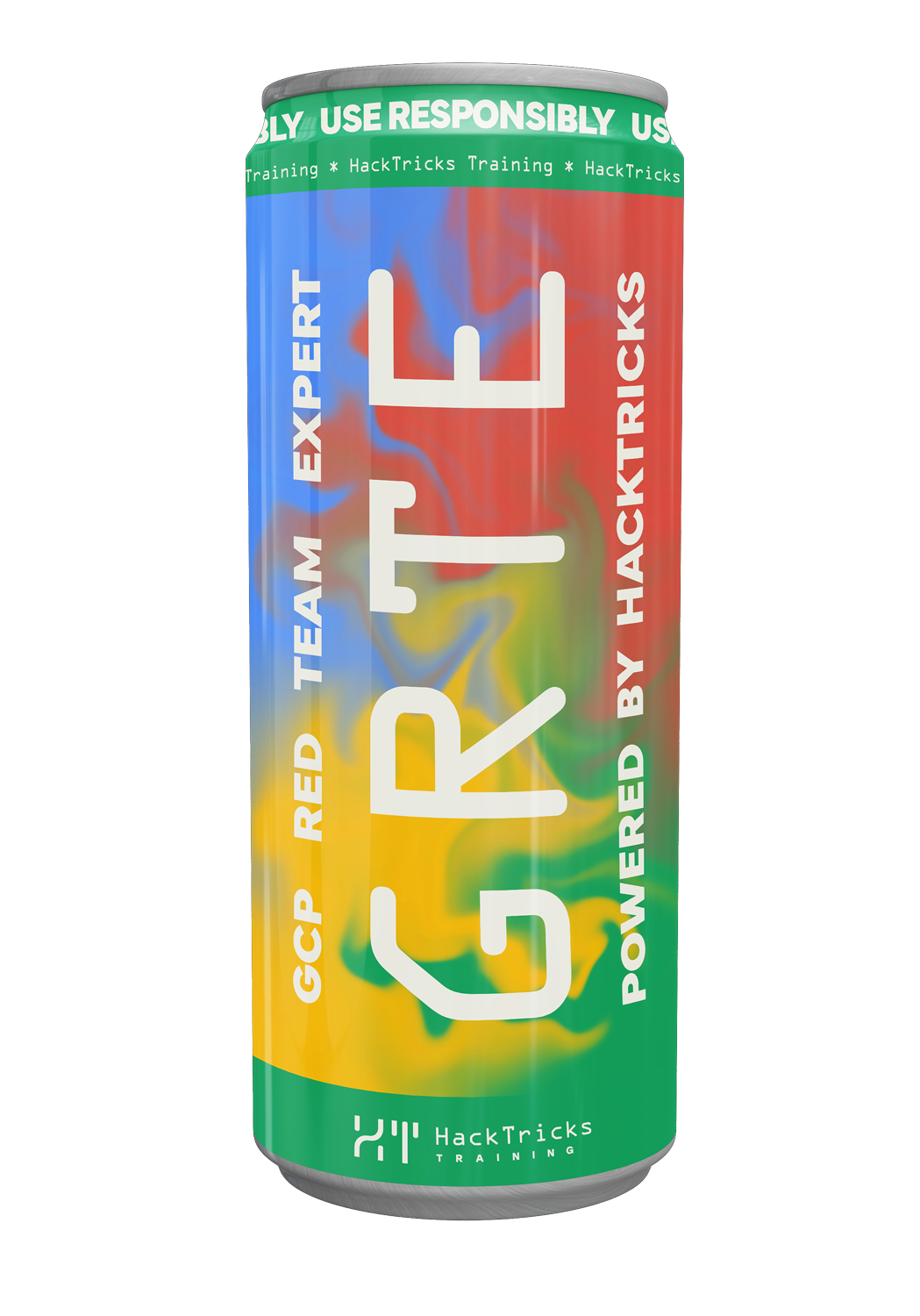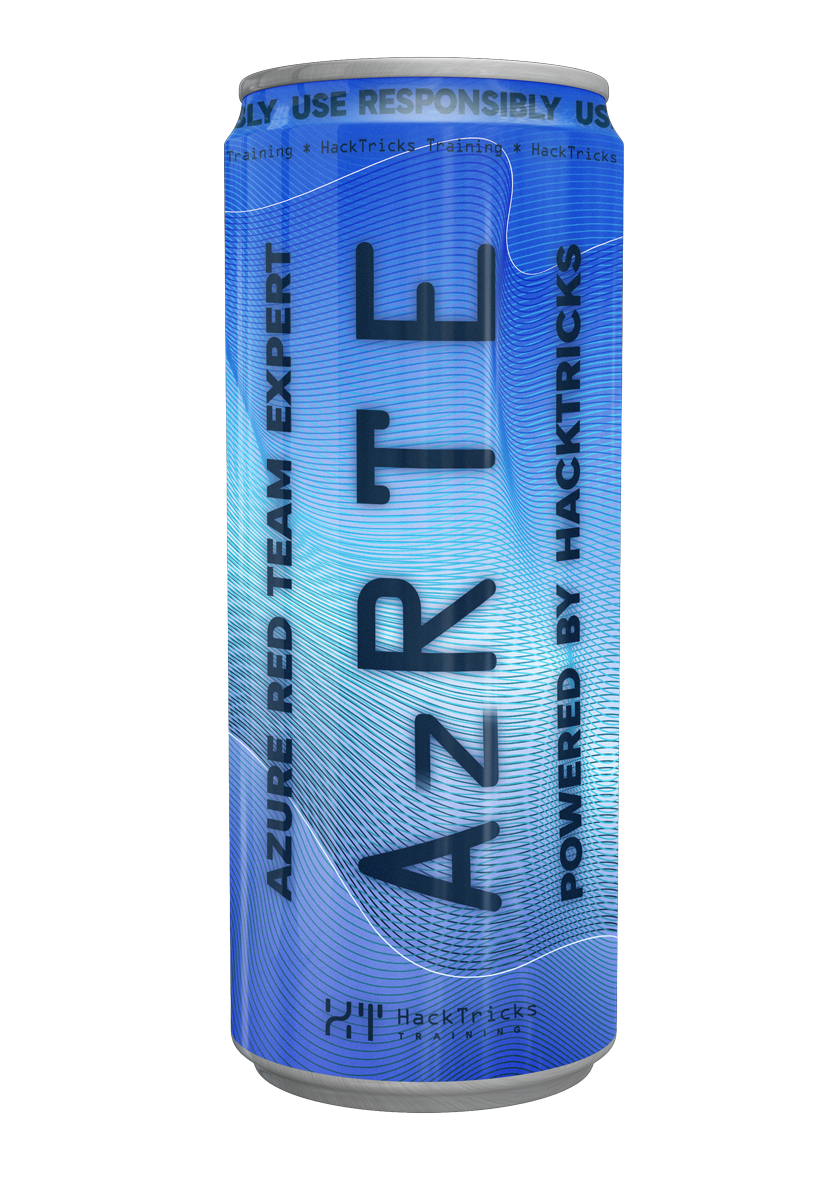Az - Enumeration Tools
Reading time: 18 minutes
tip
AWS हैकिंग सीखें और अभ्यास करें: HackTricks Training AWS Red Team Expert (ARTE)
HackTricks Training AWS Red Team Expert (ARTE)
GCP हैकिंग सीखें और अभ्यास करें:  HackTricks Training GCP Red Team Expert (GRTE)
HackTricks Training GCP Red Team Expert (GRTE) Azure हैकिंग सीखें और अभ्यास करें:
Azure हैकिंग सीखें और अभ्यास करें:  HackTricks Training Azure Red Team Expert (AzRTE)
HackTricks Training Azure Red Team Expert (AzRTE)
HackTricks का समर्थन करें
- सदस्यता योजनाओं की जांच करें!
- हमारे 💬 Discord समूह या टेलीग्राम समूह में शामिल हों या हमें Twitter 🐦 @hacktricks_live** पर फॉलो करें।**
- हैकिंग ट्रिक्स साझा करें, PRs को HackTricks और HackTricks Cloud गिटहब रिपोजिटरी में सबमिट करके।
linux में PowerShell इंस्टॉल करें
tip
linux में आपको PowerShell Core इंस्टॉल करना होगा:
sudo apt-get update
sudo apt-get install -y wget apt-transport-https software-properties-common
# Ubuntu 20.04
wget -q https://packages.microsoft.com/config/ubuntu/20.04/packages-microsoft-prod.deb
# Update repos
sudo apt-get update
sudo add-apt-repository universe
# Install & start powershell
sudo apt-get install -y powershell
pwsh
# Az cli
curl -sL https://aka.ms/InstallAzureCLIDeb | sudo bash
MacOS में PowerShell इंस्टॉल करें
निर्देश documentation:
- यदि अभी तक
brewइंस्टॉल नहीं है तो इंस्टॉल करें:
/bin/bash -c "$(curl -fsSL https://raw.githubusercontent.com/Homebrew/install/HEAD/install.sh)"
- PowerShell का नवीनतम स्थिर संस्करण इंस्टॉल करें:
brew install powershell/tap/powershell
- PowerShell चलाएँ:
pwsh
- अपडेट:
brew update
brew upgrade powershell
मुख्य Enumeration उपकरण
az cli
Azure Command-Line Interface (CLI) Python में लिखा गया एक cross-platform टूल है जो (अधिकांश) Azure और Entra ID resources को manage और administer करने के लिए उपयोग होता है। यह Azure से कनेक्ट होता है और कमांड लाइन या scripts के माध्यम से administrative commands निष्पादित करता/चलाता है।
Follow this link for the installation instructions¡.
Azure CLI में कमांड्स इस पैटर्न के अनुसार संरचित होते हैं: az <service> <action> <parameters>
Debug | MitM az cli
--debug पैरामीटर का उपयोग करके यह संभव है कि आप देख सकें कि टूल az कौन-कौन से requests भेज रहा है:
az account management-group list --output table --debug
टूल पर एक MitM करने और सभी requests की जाँच मैन्युअली करने के लिए आप कर सकते हैं:
export ADAL_PYTHON_SSL_NO_VERIFY=1
export AZURE_CLI_DISABLE_CONNECTION_VERIFICATION=1
export HTTPS_PROXY="http://127.0.0.1:8080"
export HTTP_PROXY="http://127.0.0.1:8080"
# If this is not enough
# Download the certificate from Burp and convert it into .pem format
# And export the following env variable
openssl x509 -in ~/Downloads/cacert.der -inform DER -out ~/Downloads/cacert.pem -outform PEM
export REQUESTS_CA_BUNDLE=/Users/user/Downloads/cacert.pem
Az PowerShell
Azure PowerShell एक module है जो PowerShell command line से सीधे Azure resources को मैनेज करने के लिए cmdlets प्रदान करता है।
इस लिंक का पालन करें: इंस्टॉलेशन निर्देश.
Commands in Azure PowerShell AZ Module are structured like: <Action>-Az<Service> <parameters>
Debug | MitM Az PowerShell
पैरामीटर -Debug का उपयोग करके आप टूल द्वारा भेजे जा रहे सभी अनुरोध देख सकते हैं:
Get-AzResourceGroup -Debug
In order to do a MitM to the tool and check all the requests it's sending manually you can set the env variables HTTPS_PROXY and HTTP_PROXY according to the docs.
Microsoft Graph PowerShell
Microsoft Graph PowerShell एक cross-platform SDK है जो एक single endpoint का उपयोग करके सभी Microsoft Graph APIs तक पहुँच प्रदान करता है, जिनमें SharePoint, Exchange, और Outlook जैसी सेवाएँ शामिल हैं। यह PowerShell 7+ का समर्थन करता है, MSAL के माध्यम से modern authentication, external identities, और advanced queries का समर्थन करता है। least privilege access पर ध्यान केंद्रित करते हुए यह सुरक्षित संचालन सुनिश्चित करता है और नवीनतम Microsoft Graph API सुविधाओं के अनुरूप नियमित updates प्राप्त करता है।
Follow this link for the installation instructions.
Commands in Microsoft Graph PowerShell are structured like: <Action>-Mg<Service> <parameters>
Debug Microsoft Graph PowerShell
Using the parameter -Debug it's possible to see all the requests the tool is sending:
Get-MgUser -Debug
AzureAD Powershell
Azure Active Directory (AD) module, अब deprecated, Azure PowerShell का हिस्सा है जो Azure AD संसाधनों का प्रबंधन करने के लिए उपयोग होता है। यह cmdlets प्रदान करता है जो Entra ID में उपयोगकर्ताओं, समूहों और application registrations जैसे कार्यों को प्रबंधित करने के लिए हैं।
tip
यह Microsoft Graph PowerShell द्वारा प्रतिस्थापित किया गया है
इंस्टॉलेशन निर्देशों के लिए इस लिंक को देखें: installation instructions.
स्वचालित Recon और Compliance टूल्स
turbot azure plugins
Turbot, steampipe और powerpipe Azure और Entra ID से जानकारी एकत्र करने, अनुपालन जांच करने और कॉन्फ़िगरेशन त्रुटियों का पता लगाने की सुविधा देते हैं। वर्तमान में चलाने के लिए सबसे अधिक अनुशंसित Azure मॉड्यूल हैं:
- https://github.com/turbot/steampipe-mod-azure-compliance
- https://github.com/turbot/steampipe-mod-azure-insights
- https://github.com/turbot/steampipe-mod-azuread-insights
# Install
brew install turbot/tap/powerpipe
brew install turbot/tap/steampipe
steampipe plugin install azure
steampipe plugin install azuread
# Config creds via env vars or az cli default creds will be used
export AZURE_ENVIRONMENT="AZUREPUBLICCLOUD"
export AZURE_TENANT_ID="<tenant-id>"
export AZURE_SUBSCRIPTION_ID="<subscription-id>"
export AZURE_CLIENT_ID="<client-id>"
export AZURE_CLIENT_SECRET="<secret>"
# Run steampipe-mod-azure-insights
cd /tmp
mkdir dashboards
cd dashboards
powerpipe mod init
powerpipe mod install github.com/turbot/steampipe-mod-azure-insights
steampipe service start
powerpipe server
# Go to http://localhost:9033 in a browser
Prowler
Prowler एक Open Source सुरक्षा टूल है जो AWS, Azure, Google Cloud और Kubernetes के लिए सुरक्षा संबंधी सर्वश्रेष्ठ प्रथाओं के आकलन, ऑडिट, घटना प्रतिक्रिया, सतत निगरानी, हार्डनिंग और फॉरेंसिक तैयारियों के लिए उपयोग किया जाता है।
यह मूल रूप से हमें Azure पर्यावरण के खिलाफ सैकड़ों चेक चलाने की अनुमति देता है ताकि सुरक्षा की गलत कॉन्फ़िगरेशन ढूंढी जा सकें और परिणामों को json (और अन्य टेक्स्ट फ़ॉर्मैट) में एकत्र किया जा सके या उन्हें वेब पर देखा जा सके।
# Create a application with Reader role and set the tenant ID, client ID and secret in prowler so it access the app
# Launch web with docker-compose
export DOCKER_DEFAULT_PLATFORM=linux/amd64
curl -LO https://raw.githubusercontent.com/prowler-cloud/prowler/refs/heads/master/docker-compose.yml
curl -LO https://raw.githubusercontent.com/prowler-cloud/prowler/refs/heads/master/.env
## If using an old docker-compose version, change the "env_file" params to: env_file: ".env"
docker compose up -d
# Access the web and configure the access to run a scan from it
# Prowler cli
python3 -m pip install prowler --break-system-packages
docker run --rm toniblyx/prowler:v4-latest azure --list-checks
docker run --rm toniblyx/prowler:v4-latest azure --list-services
docker run --rm toniblyx/prowler:v4-latest azure --list-compliance
docker run --rm -e "AZURE_CLIENT_ID=<client-id>" -e "AZURE_TENANT_ID=<tenant-id>" -e "AZURE_CLIENT_SECRET=<secret>" toniblyx/prowler:v4-latest azure --sp-env-auth
## It also support other authentication types, check: prowler azure --help
Monkey365
यह Azure subscriptions और Microsoft Entra ID की सुरक्षा कॉन्फ़िगरेशन समीक्षाओं को स्वचालित रूप से निष्पादित करने की अनुमति देता है।
HTML रिपोर्टें github रिपॉज़िटरी फ़ोल्डर के अंदर ./monkey-reports डायरेक्टरी में संग्रहीत की जाती हैं।
git clone https://github.com/silverhack/monkey365
Get-ChildItem -Recurse monkey365 | Unblock-File
cd monkey365
Import-Module ./monkey365
mkdir /tmp/monkey365-scan
cd /tmp/monkey365-scan
Get-Help Invoke-Monkey365
Get-Help Invoke-Monkey365 -Detailed
# Scan with user creds (browser will be run)
Invoke-Monkey365 -TenantId <tenant-id> -Instance Azure -Collect All -ExportTo HTML
# Scan with App creds
$SecureClientSecret = ConvertTo-SecureString "<secret>" -AsPlainText -Force
Invoke-Monkey365 -TenantId <tenant-id> -ClientId <client-id> -ClientSecret $SecureClientSecret -Instance Azure -Collect All -ExportTo HTML
ScoutSuite
Scout Suite मैन्युअल निरीक्षण के लिए कॉन्फ़िगरेशन डेटा एकत्र करता है और जोखिम वाले क्षेत्रों को हाइलाइट करता है। यह एक multi-cloud security-auditing tool है, जो cloud environments की security posture assessment करने में सक्षम बनाता है।
virtualenv -p python3 venv
source venv/bin/activate
pip install scoutsuite
scout --help
# Use --cli flag to use az cli credentials
# Use --user-account to have scout prompt for user credentials
# Use --user-account-browser to launch a browser to login
# Use --service-principal to have scout prompt for app credentials
python scout.py azure --cli
Azure-MG-Sub-Governance-Reporting
यह एक powershell स्क्रिप्ट है जो आपको Management Group और Entra ID tenant के भीतर सभी संसाधन और अनुमतियों को दृश्य रूप में दिखाने और सुरक्षा में खामियों को खोजने में मदद करती है।
यह Az PowerShell module का उपयोग करके काम करती है, इसलिए जो भी authentication इस module द्वारा समर्थित है वह इस tool द्वारा भी समर्थित है।
import-module Az
.\AzGovVizParallel.ps1 -ManagementGroupId <management-group-id> [-SubscriptionIdWhitelist <subscription-id>]
स्वचालित Post-Exploitation टूल्स
ROADRecon
ROADRecon का enumeration Entra ID की कॉन्फ़िगरेशन के बारे में जानकारी प्रदान करता है, जैसे उपयोगकर्ता, समूह, भूमिकाएँ, conditional access policies...
cd ROADTools
pipenv shell
# Login with user creds
roadrecon auth -u test@corp.onmicrosoft.com -p "Welcome2022!"
# Login with app creds
roadrecon auth --as-app --client "<client-id>" --password "<secret>" --tenant "<tenant-id>"
roadrecon gather
roadrecon gui
AzureHound
AzureHound is the BloodHound collector for Microsoft Entra ID and Azure. It is a single static Go binary for Windows/Linux/macOS that talks directly to:
- Microsoft Graph (Entra ID directory, M365) and
- Azure Resource Manager (ARM) control plane (subscriptions, resource groups, compute, storage, key vault, app services, AKS, etc.)
मुख्य विशेषताएँ
- Runs from anywhere on the public internet against tenant APIs (no internal network access required)
- Outputs JSON for BloodHound CE ingestion to visualize attack paths across identities and cloud resources
- Default User-Agent observed: azurehound/v2.x.x
प्रमाणीकरण विकल्प
- Username + password: -u
-p - Refresh token: --refresh-token
- JSON Web Token (access token): --jwt
- Service principal secret: -a
-s - Service principal certificate: -a
--cert <cert.pem> --key <key.pem> [--keypass ]
Examples
# Full tenant collection to file using different auth flows
## User creds
azurehound list -u "<user>@<tenant>" -p "<pass>" -t "<tenant-id|domain>" -o ./output.json
## Use an access token (JWT) from az cli for Graph
JWT=$(az account get-access-token --resource https://graph.microsoft.com -o tsv --query accessToken)
azurehound list --jwt "$JWT" -t "<tenant-id>" -o ./output.json
## Use a refresh token (e.g., from device code flow)
azurehound list --refresh-token "<refresh_token>" -t "<tenant-id>" -o ./output.json
## Service principal secret
azurehound list -a "<client-id>" -s "<secret>" -t "<tenant-id>" -o ./output.json
## Service principal certificate
azurehound list -a "<client-id>" --cert "/path/cert.pem" --key "/path/key.pem" -t "<tenant-id>" -o ./output.json
# Targeted discovery
azurehound list users -t "<tenant-id>" -o users.json
azurehound list groups -t "<tenant-id>" -o groups.json
azurehound list roles -t "<tenant-id>" -o roles.json
azurehound list role-assignments -t "<tenant-id>" -o role-assignments.json
# Azure resources via ARM
azurehound list subscriptions -t "<tenant-id>" -o subs.json
azurehound list resource-groups -t "<tenant-id>" -o rgs.json
azurehound list virtual-machines -t "<tenant-id>" -o vms.json
azurehound list key-vaults -t "<tenant-id>" -o kv.json
azurehound list storage-accounts -t "<tenant-id>" -o sa.json
azurehound list storage-containers -t "<tenant-id>" -o containers.json
azurehound list web-apps -t "<tenant-id>" -o webapps.json
azurehound list function-apps -t "<tenant-id>" -o funcapps.json
What gets queried
- Graph endpoints (examples):
- /v1.0/organization, /v1.0/users, /v1.0/groups, /v1.0/roleManagement/directory/roleDefinitions, directoryRoles, owners/members
- ARM endpoints (examples):
- management.azure.com/subscriptions/.../providers/Microsoft.Storage/storageAccounts
- .../Microsoft.KeyVault/vaults, .../Microsoft.Compute/virtualMachines, .../Microsoft.Web/sites, .../Microsoft.ContainerService/managedClusters
Preflight behavior and endpoints
- Each azurehound list
- Identity platform: login.microsoftonline.com
- Graph: GET https://graph.microsoft.com/v1.0/organization
- ARM: GET https://management.azure.com/subscriptions?api-version=...
- Cloud environment base URLs differ for Government/China/Germany. See constants/environments.go in the repo.
ARM-heavy objects (less visible in Activity/Resource logs)
- The following list targets predominantly use ARM control plane reads: automation-accounts, container-registries, function-apps, key-vaults, logic-apps, managed-clusters, management-groups, resource-groups, storage-accounts, storage-containers, virtual-machines, vm-scale-sets, web-apps.
- These GET/list operations are typically not written to Activity Logs; data-plane reads (e.g., *.blob.core.windows.net, *.vault.azure.net) are covered by Diagnostic Settings at the resource level.
OPSEC and logging notes
- Microsoft Graph Activity Logs are not enabled by default; enable and export to SIEM to gain visibility of Graph calls. Expect the Graph preflight GET /v1.0/organization with UA azurehound/v2.x.x.
- Entra ID non-interactive sign-in logs record the identity platform auth (login.microsoftonline.com) used by AzureHound.
- ARM control-plane read/list operations are not recorded in Activity Logs; many azurehound list operations against resources won’t appear there. Only data-plane logging (via Diagnostic Settings) will capture reads to service endpoints.
- Defender XDR GraphApiAuditEvents (preview) can expose Graph calls and token identifiers but may lack UserAgent and have limited retention.
Tip: When enumerating for privilege paths, dump users, groups, roles, and role assignments, then ingest in BloodHound and use prebuilt cypher queries to surface Global Administrator/Privileged Role Administrator and transitive escalation via nested groups and RBAC assignments.
Launch the BloodHound web with curl -L https://ghst.ly/getbhce | docker compose -f - up and import the output.json file. Then, in the EXPLORE tab, in the CYPHER section you can see a folder icon that contains pre-built queries.
MicroBurst
MicroBurst includes functions and scripts that support Azure Services discovery, weak configuration auditing, and post exploitation actions such as credential dumping. It is intended to be used during penetration tests where Azure is in use.
Import-Module .\MicroBurst.psm1
Import-Module .\Get-AzureDomainInfo.ps1
Get-AzureDomainInfo -folder MicroBurst -Verbose
PowerZure
PowerZure को ऐसे फ्रेमवर्क की आवश्यकता से बनाया गया था जो Azure, EntraID और संबंधित संसाधनों दोनों पर reconnaissance और exploitation कर सके।
यह Az PowerShell मॉड्यूल का उपयोग करता है, इसलिए जो भी authentication इस मॉड्यूल द्वारा समर्थित है वह PowerZure द्वारा भी समर्थित होगा।
# Login
Import-Module Az
Connect-AzAccount
# Clone and import PowerZure
git clone https://github.com/hausec/PowerZure
cd PowerZure
ipmo ./Powerzure.psd1
Invoke-Powerzure -h # Check all the options
# Info Gathering (read)
Get-AzureCurrentUser # Get current user
Get-AzureTarget # What can you access to
Get-AzureUser -All # Get all users
Get-AzureSQLDB -All # Get all SQL DBs
Get-AzureAppOwner # Owners of apps in Entra
Show-AzureStorageContent -All # List containers, shared and tables
Show-AzureKeyVaultContent -All # List all contents in key vaults
# Operational (write)
Set-AzureUserPassword -Password <password> -Username <username> # Change password
Set-AzureElevatedPrivileges # Get permissions from Global Administrator in EntraID to User Access Administrator in Azure RBAC.
New-AzureBackdoor -Username <username> -Password <password>
Invoke-AzureRunCommand -Command <command> -VMName <vmname>
[...]
GraphRunner
GraphRunner एक post-exploitation toolset है जो Microsoft Graph API के साथ इंटरैक्ट करने के लिए है। यह Microsoft Entra ID (Azure AD) खाते से डेटा की reconnaissance, persistence, और pillaging करने के लिए विभिन्न टूल्स प्रदान करता है।
#A good place to start is to authenticate with the Get-GraphTokens module. This module will launch a device-code login, allowing you to authenticate the session from a browser session. Access and refresh tokens will be written to the global $tokens variable. To use them with other GraphRunner modules use the Tokens flag (Example. Invoke-DumpApps -Tokens $tokens)
Import-Module .\GraphRunner.ps1
Get-GraphTokens
#This module gathers information about the tenant including the primary contact info, directory sync settings, and user settings such as if users have the ability to create apps, create groups, or consent to apps.
Invoke-GraphRecon -Tokens $tokens -PermissionEnum
#A module to dump conditional access policies from a tenant.
Invoke-GraphRecon -Tokens $tokens -PermissionEnum
#A module to dump conditional access policies from a tenant.
Invoke-DumpCAPS -Tokens $tokens -ResolveGuids
#This module helps identify malicious app registrations. It will dump a list of Azure app registrations from the tenant including permission scopes and users that have consented to the apps. Additionally, it will list external apps that are not owned by the current tenant or by Microsoft's main app tenant. This is a good way to find third-party external apps that users may have consented to.
Invoke-DumpApps -Tokens $tokens
#Gather the full list of users from the directory.
Get-AzureADUsers -Tokens $tokens -OutFile users.txt
#Create a list of security groups along with their members.
Get-SecurityGroups -AccessToken $tokens.access_token
#Gets groups that may be able to be modified by the current user
Get-UpdatableGroups -Tokens $tokens
#Finds dynamic groups and displays membership rules
Get-DynamicGroups -Tokens $tokens
#Gets a list of SharePoint site URLs visible to the current user
Get-SharePointSiteURLs -Tokens $tokens
#This module attempts to locate mailboxes in a tenant that have allowed other users to read them. By providing a userlist the module will attempt to access the inbox of each user and display if it was successful. The access token needs to be scoped to Mail.Read.Shared or Mail.ReadWrite.Shared for this to work.
Invoke-GraphOpenInboxFinder -Tokens $tokens -Userlist users.txt
#This module attempts to gather a tenant ID associated with a domain.
Get-TenantID -Domain
#Runs Invoke-GraphRecon, Get-AzureADUsers, Get-SecurityGroups, Invoke-DumpCAPS, Invoke-DumpApps, and then uses the default_detectors.json file to search with Invoke-SearchMailbox, Invoke-SearchSharePointAndOneDrive, and Invoke-SearchTeams.
Invoke-GraphRunner -Tokens $tokens
Stormspotter
Stormspotter Azure subscription में मौजूद संसाधनों का एक “attack graph” बनाता है। यह red teams और pentesters को tenant के भीतर attack surface और pivot opportunities को visualize करने में सक्षम बनाता है, और आपके defenders को incident response कार्यों को जल्दी से orient और prioritize करने में supercharge कर देता है।
दुर्भाग्यवश, ऐसा लगता है कि इसे मेंटेन नहीं किया जा रहा है।
# Start Backend
cd stormspotter\backend\
pipenv shell
python ssbackend.pyz
# Start Front-end
cd stormspotter\frontend\dist\spa\
quasar.cmd serve -p 9091 --history
# Run Stormcollector
cd stormspotter\stormcollector\
pipenv shell
az login -u test@corp.onmicrosoft.com -p Welcome2022!
python stormspotter\stormcollector\sscollector.pyz cli
# This will generate a .zip file to upload in the frontend (127.0.0.1:9091)
संदर्भ
- Cloud Discovery With AzureHound (Unit 42)
- AzureHound repository
- BloodHound repository
- AzureHound Community Edition Flags
- AzureHound constants/environments.go
- AzureHound client/storage_accounts.go
- AzureHound client/roles.go
tip
AWS हैकिंग सीखें और अभ्यास करें: HackTricks Training AWS Red Team Expert (ARTE)
HackTricks Training AWS Red Team Expert (ARTE)
GCP हैकिंग सीखें और अभ्यास करें:  HackTricks Training GCP Red Team Expert (GRTE)
HackTricks Training GCP Red Team Expert (GRTE) Azure हैकिंग सीखें और अभ्यास करें:
Azure हैकिंग सीखें और अभ्यास करें:  HackTricks Training Azure Red Team Expert (AzRTE)
HackTricks Training Azure Red Team Expert (AzRTE)
HackTricks का समर्थन करें
- सदस्यता योजनाओं की जांच करें!
- हमारे 💬 Discord समूह या टेलीग्राम समूह में शामिल हों या हमें Twitter 🐦 @hacktricks_live** पर फॉलो करें।**
- हैकिंग ट्रिक्स साझा करें, PRs को HackTricks और HackTricks Cloud गिटहब रिपोजिटरी में सबमिट करके।
 HackTricks Cloud
HackTricks Cloud